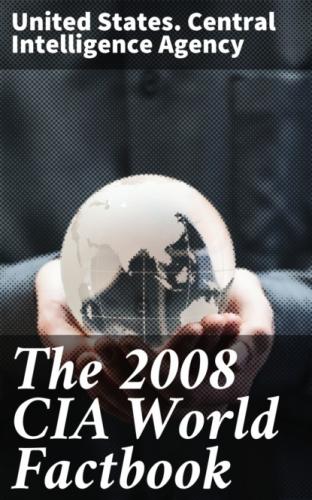Imports - partners:
Saudi Arabia 19.1%, Italy 15.1%, China 11.1%, Turkey 8.3%, Germany 7.2%, Ukraine 5.1% (2007)
Economic aid - recipient:
$355.2 million (2005)
Reserves of foreign exchange and gold:
$23 million (31 December 2007 est.)
Debt - external:
$311 million (2000 est.)
Currency (code):
nakfa (ERN)
Currency code:
ERN
Exchange rates:
nakfa (ERN) per US dollar - 15.5 (2007), 15.4 (2006), 14.5 (2005), 13.788 (2004), 13.878 (2003) note: the official exchange rate is 15 nakfa to the dollar
Communications
Eritrea
Telephones - main lines in use:
37,500 (2006)
Telephones - mobile cellular:
70,000 (2007)
Telephone system:
general assessment: inadequate; combined fixed-line and mobile cellular subscribership is only about 2 per 100 persons domestic: inadequate; most telephones are in Asmara; government is seeking international tenders to improve the system (2002) international: country code - 291; note - international connections exist
Radio broadcast stations:
AM 2, FM NA, shortwave 2 (2000)
Radios:
345,000 (1997)
Television broadcast stations:
2 (2006)
Televisions:
1,000 (1997)
Internet country code:
.er
Internet hosts:
1,074 (2008)
Internet Service Providers (ISPs):
5 (2001)
Internet users:
120,000 (2007)
Transportation
Eritrea
Airports:
18 (2007)
Airports - with paved runways:
total: 4 over 3,047 m: 2 2,438 to 3,047 m: 2 (2007)
Airports - with unpaved runways:
total: 14 over 3,047 m: 1 2,438 to 3,047 m: 1 1,524 to 2,437 m: 6 914 to 1,523 m: 4 under 914 m: 2 (2007)
Heliports:
1 (2007)
Railways:
total: 306 km narrow gauge: 306 km 0.950-m gauge (2006)
Roadways:
total: 4,010 km paved: 874 km unpaved: 3,136 km (2000)
Merchant marine:
total: 5 by type: cargo 2, liquefied gas 1, petroleum tanker 1, roll on/roll off 1 (2008)
Ports and terminals:
Assab, Massawa
Military
Eritrea
Military branches:
Eritrean Armed Forces: Ground Forces, Navy, Air Force (2008)
Military service age and obligation:
18–40 years of age for male and female voluntary and compulsory military service; 16-month conscript service obligation (2006)
Manpower available for military service:
males age 16–49: 1,108,836 females age 16–49: 1,096,120 (2008 est.)
Manpower fit for military service:
males age 16–49: 715,531 females age 16–49: 731,511 (2008 est.)
Manpower reaching militarily significant age annually:
male: 60,490 female: 60,639 (2008 est.)
Military expenditures:
6.3% of GDP (2006 est.)
Transnational Issues
Eritrea
Disputes - international:
Eritrea and Ethiopia agreed to abide by 2002 Ethiopia-Eritrea Boundary Commission's (EEBC) delimitation decision but, neither party responded to the revised line detailed in the November 2006 EEBC Demarcation Statement; UN Peacekeeping Mission to Ethiopia and Eritrea (UNMEE), which has monitored the 25-km-wide Temporary Security Zone in Eritrea since 2000, is extended for six months in 2007 despite Eritrean restrictions on its operations and reduced force of 17,000; Sudan accuses Eritrea of supporting eastern Sudanese rebel groups
Refugees and internally displaced persons:
IDPs: 32,000 (border war with Ethiopia from 1998–2000; most IDPs are near the central border region) (2007)
This page was last updated on 18 December, 2008
======================================================================
@Estonia
Introduction
Estonia
Background:
After centuries of Danish, Swedish, German, and Russian rule, Estonia attained independence in 1918. Forcibly incorporated into the USSR in 1940 - an action never recognized by the US - it regained its freedom in 1991, with the collapse of the Soviet Union. Since the last Russian troops left in 1994, Estonia has been free to promote economic and political ties with Western Europe. It joined both NATO and the EU in the spring of 2004.
Geography
Estonia
Location:
Eastern Europe, bordering the Baltic Sea and Gulf of Finland, between Latvia and Russia
Geographic coordinates:
59 00 N, 26 00 E
Map references:
Europe
Area:
total: 45,226 sq km land: 43,211 sq km water: 2,015 sq km note: includes 1,520 islands in the Baltic Sea
Area - comparative:
slightly smaller than New Hampshire and Vermont combined
Land boundaries:
total: 633 km border countries: Latvia 343 km, Russia 290 km
Coastline:
3,794 km
Maritime claims:
territorial sea: 12 nm exclusive economic zone: limits fixed in coordination with neighboring states
Climate:
maritime, wet, moderate winters, cool summers
Terrain:
marshy, lowlands; flat in the north, hilly in the south
Elevation extremes:
lowest point: Baltic Sea 0 m highest point: Suur Munamagi 318 m
Natural resources:
oil
